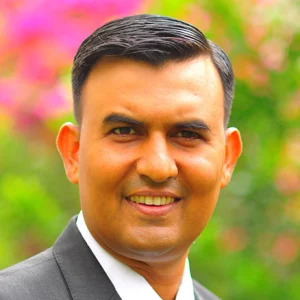For too long, most organizations have followed a standard approach to leadership development : select high-potential employees, put them through a standardized leadership development program that builds a set of competencies, and hope that they emerge as better leaders. Leadership development was seen as a one-size-fits-all package. But this approach no longer works. What today’s leaders need is individually tailored, experience-based learning that can be consumed—thanks to digital technologies—anytime, anywhere.
To create a more people-centered approach to leadership development, we reimagined three key steps in the learning journey: start with the individual, focus on the whole leader, and customize and assess intensely.
A Holistic Approach
We developed this new holistic approach to leadership development in response to a request from His Highness Sheikh Mohammed bin Rashid Al Maktoum of the United Arab Emirates. He recently invited the Mohammed Bin Rashid Center for Leadership Development (MBRCLD) and The Boston Consulting Group to design a leadership development program for MBRCLD’s leadership framework. While the leadership framework is designed for Emirati leaders working at all levels of government and in the private sector, the principles in the jointly created program provide new paths for any organization around the globe that is looking to revitalize its leadership development.
The most fundamental tenet of effective leadership development is that it starts with the individual. Identifying the right candidates is essential. Then those candidates must be provided with a program that is tailored to their needs.
It’s critical to focus on the whole leader—training needs to go beyond skills acquisition.
It’s also critical to focus on the whole leader—training should go beyond skills acquisition to tap into intuition, physical fitness and flexibility, and wellness. And through intense customization, learning design should be put back into the hands of the learners.
The approach is no different when it comes to evaluation. Continual assessments should track progress across many dimensions, both personal and professional, to ensure that participants are developing highly individual leadership styles rather than simply acquiring a skill set that fits a standard view of leadership.
Start with the Individual
Candidate selection is the first and most crucial consideration. Individuals should be chosen for leadership development on the basis of their potential, which means rating them on something that has yet to be seen. But assessments are too often subjective and heavily biased. Here, gamification offers a solution. It allows selection teams to assess more objectively whether candidates are a good fit by evaluating them on specific behaviors sought by the organization.
For example, when assessing someone for learning agility and risk appetite, a traditional approach might have been to ask them directly and take the answer at face value. The gamified approach uses a simple exercise, such as inflating different-colored balloons. The more the candidate inflates the balloon, the more valuable it becomes. The challenge is to bank the value before the balloon becomes overinflated and bursts. Adding to the complexity, different-colored balloons have different bursting points. This creates a game that measures actual behavior versus reported behavior.
Other techniques can also be used to ensure a fair and objective candidate selection process. Data analytics, if well designed, can eliminate personal bias. And software can distill insights from CVs, regardless of the format in which they are submitted. Together, these techniques boost the chances of finding the right candidates.
Any leadership development that’s limited to delivering a set of competencies, each taught in isolation, is going to miss the mark.
Once candidates have been chosen, program design must recall a distinction that sometimes gets lost in the digital age: leaders are individuals with different development needs. So any leadership development that’s limited to delivering a set of competencies, each taught in isolation, is going to miss the mark.
Today’s leaders need to navigate all kinds of challenges and opportunities, and their training should reflect that. This means designing an experience-based curriculum that addresses many competencies simultaneously. Training projects shouldn’t be discrete segments that start and finish; they should be experiences that give leaders opportunities to stretch their learning continually. Participants should work on real projects connected to their everyday jobs, and their managers should ensure that the projects put participants through a sufficiently diverse set of experiences. In addition, training should take place in settings similar to those in which leaders will eventually apply what they learn.
Our program includes a number of foundational experiences that develop leadership skills, including:
- Providing leaders with the kind of guidance from senior management that will make a meaningful difference to their careers
- Giving leaders a substantial increase in the scope of their role
- Enabling leaders to watch and learn from the actions of both successful and unsuccessful superiors
Focus on the Whole Leader
Most leadership development programs focus on work-related competencies. But this fails to recognize a critical fact: it takes more than skills development to enable leaders to perform well—and sustainably. These days, private and work lives are closely intertwined. And the collective experiences of a leader’s lifetime, both personal and professional, contribute to intuition—something that’s extremely valuable but often ignored at times of high stress, when leaders may need to make difficult decisions and bold choices at speed.
Leaders must have a capacity for self-reflection and the ability to listen to and learn from the experiences they have acquired in all spheres of life. To go beyond specific skills acquisition, the program we developed incorporates a sports, wellness, and mindfulness segment. This approach ensures that leadership development addresses the whole individual, rather than just the employee who comes to work every day. Mentoring, guidance, and executive-coaching meetings underpin this approach, as do periodic networking events that foster alumni support and help participants to expand their networks.
In addition, digital platforms allow participants to access learning and take assessments at any time and in any location, share content with their peers, and participate in virtual, facilitator-led sessions. Technologies such as virtual reality can enhance learning, allowing leaders to experience a variety of challenges and situations, such as attending a simulated board meeting before actually being present at one.
Customize and Assess Intensely
Traditionally, companies have imposed a learning journey on their leaders. But now they need to turn this approach on its head, putting the learning objectives back into the learner’s hands. Participants should be in the driver’s seat, with the ability to design their own curriculum. Most programs try to save costs by identifying modules that cover the needs of all participants, but we believe it’s important to give participants choices—from the learning trips they take to the tailored challenges and experiences that help them acquire rapid and deep growth at critical career stages.
Participants should be in the driver’s seat, with the ability to design their own curriculum.
Leadership programs must put the individual learner’s needs at the center of their design. Technology can give participants more control over which parts of the training they choose to take. And in our program, all participants receive a personal development fund that they can use to tailor part of the program to meet their needs. While one participant chose to spend it on a public-speaking course, another opted to use the fund to create a community support group for the underprivileged. Yet another decided to spend it on becoming a certified coach.
The customized, whole-person approach should be applied to evaluation too. In addition to conducting pre- and postcourse 360-degree evaluations, we implemented ongoing assessments across many areas. These evaluations assessed the potential for leaders to apply cross-pollination in their thinking across different sectors, age brackets, geographic contexts, backgrounds, and experiences.
The idea was to create learning that can be applied across industries. For example, if participants were solving a problem for the airline industry, those without airline experience but with diverse experience from a different sector, geographic area, or educational background could bring fresh perspectives to the discussion. Participants were given feedback on their ability to transfer learning from their sectors and experiences to others. The evaluations also assessed the physical flexibility and health indicators of participants before and after the program.
Ongoing assessments of participants’ progress across many dimensions capture far more meaningful data on a program’s impact than can be gleaned from traditional postcourse participant surveys.
Get More Bang for Your Leadership Bucks
When companies provide executives with skills that are relevant to their professional lives and the industries in which they work, these new leaders can more quickly translate that learning into career advances and provide added value to their organizations. Moreover, the move from the classroom to app-based learning and the use of virtual technologies creates an immersive, highly relevant set of experiences—and cuts costs in the process.
When a more holistic, experience-based approach is applied to leadership development—and measurement reflects this—executives can move up or across their organizations more quickly. And their employers can nurture the leaders they need and get far more return on their leadership development investment.








